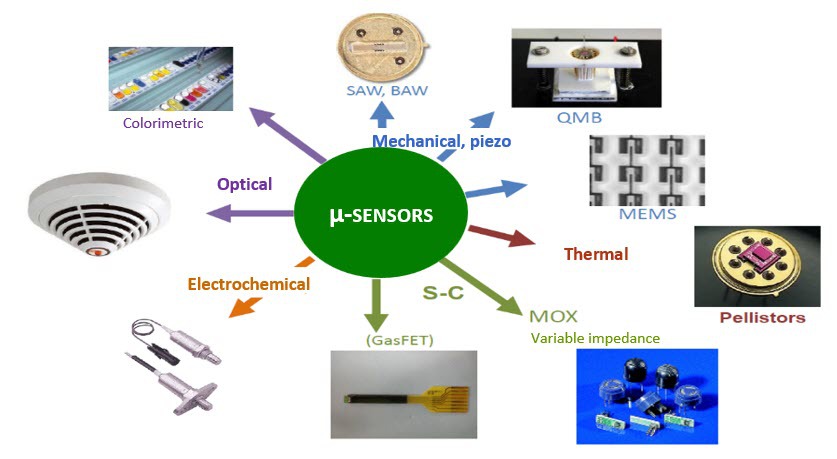Applications
Physical principles of detection?
There are five main physico-chemical detection principles for air pollutants:

For gaseous species, the market is primarily covered by:
Electrochemical measurement, based on the specific chemical reaction between a targeted pollutant to be detected and an electrolyte, which produces an electrical current proportional to the gas concentration.
Metal oxide measurement (MOx), based on redox reactions occurring on the surface of the semiconductor material heated to a high temperature (several hundred degrees). Electrical resistivity variations are measured, which depend on the type of metal oxide used, its operating temperature, and the gas family to be detected (alcohols, aldehydes, hydrocarbons, etc.). With metal oxides, detection is not specific to a single gas but rather to a family of pollutants.
NDIR optical measurement (Non-Dispersive Infra-Red): In this specific case, the quantity of Total Organic Compounds (TOCs) is measured.
For particles, the market is primarily covered by:
Optical detection: A laser diode emits a beam toward a photosensitive sensor, which then converts the light scattered by the particles into electrical signals. These signals are analyzed by an algorithm that classifies particles by size, taking into account the scattering angle, the distance between the particle and the detector, and the intensity and wavelength (λ) of the monochromatic scattered light.